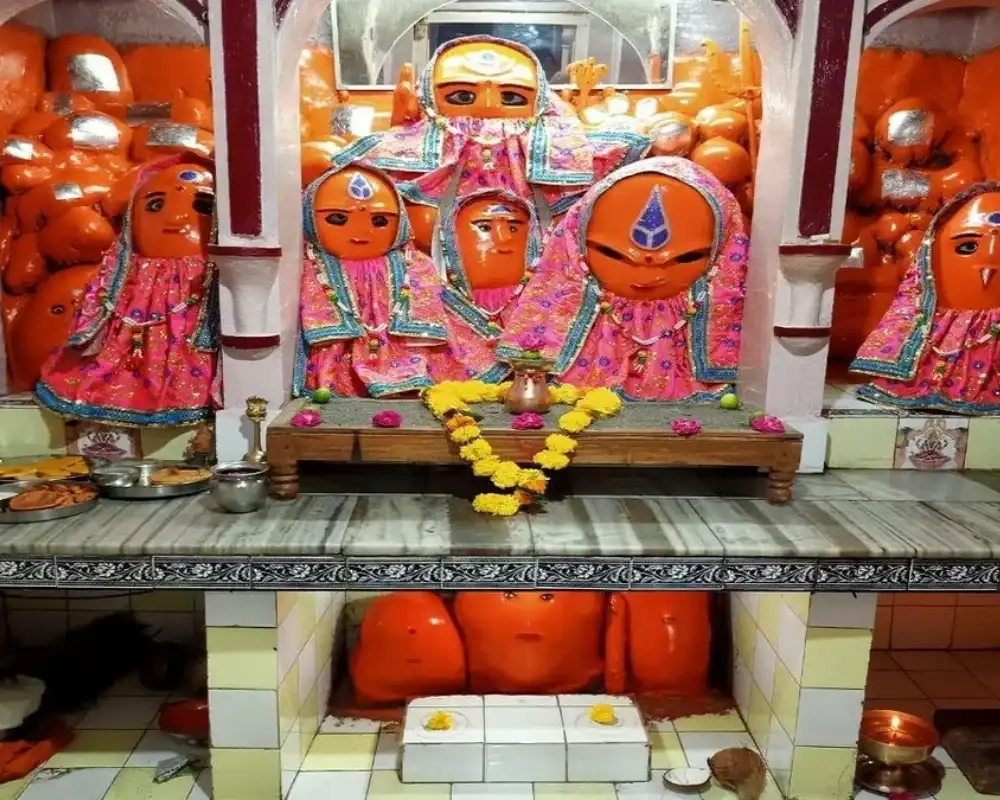Shri Kalabhairav Temple
Nestled in the spiritual heart of India, Shri Kalabhairav Temple is a sacred shrine dedicated to Lor...

Perched atop a hill and steeped in mysticism, the Chausath Yogini Temple is one of the most intriguing and spiritually significant shrines in India. Dedicated to the 64 Yoginis, manifestations of the Divine Feminine (Shakti), this temple is not only a center of ancient Tantric practices but also a magnificent example of medieval Indian architecture.
The term ‘Chausath Yogini’ literally means 64 female ascetics or goddesses. These Yoginis are believed to be powerful Tantric deities who served as attendants to Goddess Durga or Kali, possessing supernatural powers. Worship of the 64 Yoginis is part of Shakta and Tantric traditions, with each Yogini representing a unique aspect of feminine energy.
Unlike mainstream Hindu worship, the Yogini cult emphasizes divine feminine power, nature worship, and spiritual liberation through esoteric practices.
Located 20 km from Bhubaneswar, it is a circular, open-roofed temple dating back to the 9th century.
Built by Queen Hiradevi of the Bhauma dynasty.
Houses 64 intricately carved black stone Yogini idols, each seated on animals or demons, exuding power and grace.
Located near Mitawali village, this temple is believed to have inspired the design of India’s Parliament House.
It is circular in shape and rests on a hilltop, with a commanding view of the surrounding countryside.
Features 64 small shrines in a circle and a central open courtyard.
Situated near the famous Bhedaghat falls, this temple is accessible via a climb of more than 100 steps.
Offers a panoramic view and has beautifully carved idols of the Yoginis and Goddess Durga.
The Yogini temples are not roofed (especially in Hirapur and Morena) to allow cosmic energy from the sun and moon to enhance spiritual practices.
They were once active Tantric centers where rituals were performed to attain siddhis (supernatural powers) and spiritual awakening.
Worship of Yoginis breaks gender norms and celebrates feminine energy, protection, wisdom, and fearlessness.
The number 64 has spiritual significance in Hinduism and Tantric philosophy, symbolizing completeness and cosmic balance.
Circular Architecture: Unlike typical temple structures, Yogini temples are circular, representing unity and eternity.
Open Roof Design: Allows direct exposure to celestial bodies, enhancing meditative energy.
Individual Shrines: Each Yogini has her own shrine with distinctive poses, ornaments, and vahanas (vehicles).
Mystical Energy: Many visitors report a powerful spiritual vibration in these spaces, ideal for meditation and introspection.
To experience ancient feminine spiritual power rarely emphasized in mainstream Hinduism.
To witness unique architecture that blends aesthetics with cosmic symbolism.
To explore the roots of Tantric traditions, which focus on energy balance, transformation, and liberation.
To enjoy breathtaking views and peaceful natural surroundings (especially at Mitawali and Jabalpur).
Best Time to Visit: October to March for pleasant weather.
Wear comfortable shoes as most temples are located on hilltops.
Respect the sanctity of the site, especially as some areas were used for esoteric rituals.
Local guides can offer helpful historical and mythological insights.
Nestled in the spiritual heart of India, Shri Kalabhairav Temple is a sacred shrine dedicated to Lor...
Nestled in the ancient city of Ujjain, Chintaman Ganesh Temple is one of the most revered and histor...
The Navagraha Temple is a sacred site dedicated to the nine celestial deities or planets (Navagrahas...
The Ram Janaki Temple, also known as the Janaki Mandir, is one of the most revered Hindu temples ded...
